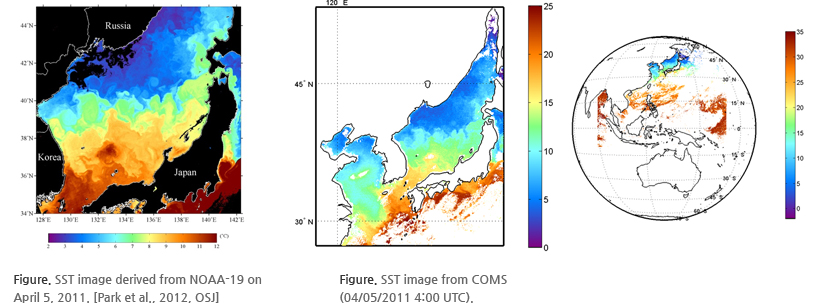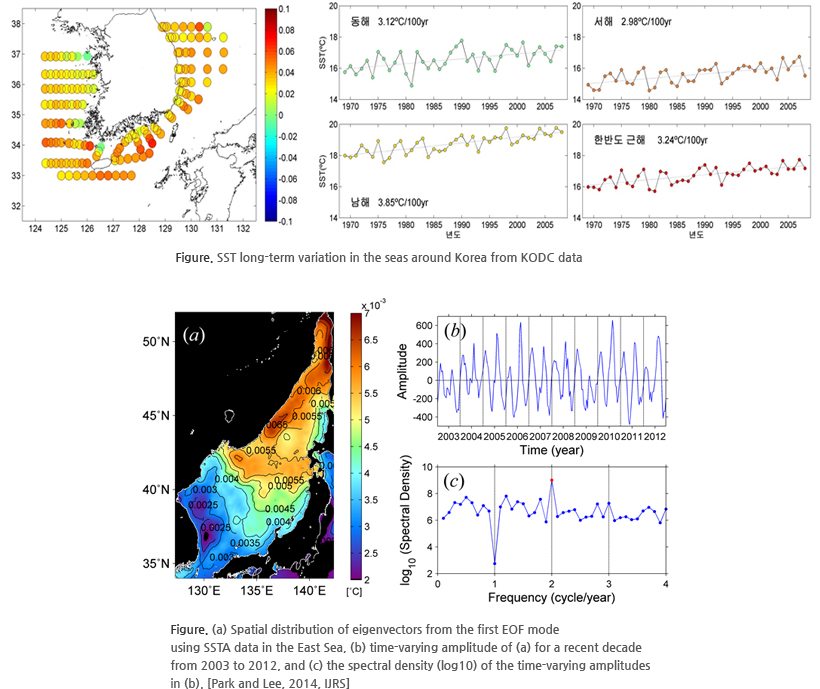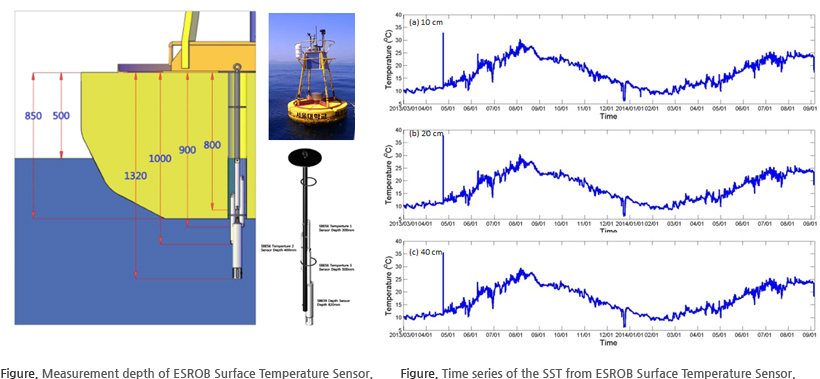Sea Surface Temperature
- HOME
- Research
- Topic
- Sea Surface Temperature
Sea surface temperature
- Sea surface temperature is one of the most important atmospheric-oceanic variables used to monitor oceanic environments and to understand climate
change.
Research Topics:
- - Development of SST retrieval algorithms (MCSST, NLSST, Hybrid SST, etc.)
- - Retrieval and validation of satellite-derived SST
- - Long-term and short-term variation
- - Relationship between skin and bulk SST
- - Air-sea interaction
 Retrieval and Validation of Satellite-derived SST
Retrieval and Validation of Satellite-derived SST
High spatial and temporal resolution data were obtained from satellites.
SST data were retrieved from the observation data from near-polar orbit satellites (e.g., NOAA) and a geostationary satellite (e.g., COMS)
- - For the retrieval of satellite-derived sea surface temperature (SST), the traditional empirical regression algorithms, such as multi-channel SST (MCSST)
and non-linear SST (NLSST) were used.
- - As it has become easier to obtain clear-sky brightness temperature through a radiative transfer model (RTM), a new hybrid algorithm has been suggested.
SST retrievals in the seas around Korea were compared to in situ measurements for validation.
SST composite images were produced.
 Long-term and Short-term Variation
Long-term and Short-term Variation
High spatial and temporal resolution data were obtained from satellites.
SST data were retrieved from the observation data from near-polar orbit satellites (e.g., NOAA) and a geostationary satellite (e.g., COMS)
- - For the retrieval of satellite-derived sea surface temperature (SST), the traditional empirical regression algorithms, such as multi-channel SST (MCSST)
and non-linear SST (NLSST) were used.
- - As it has become easier to obtain clear-sky brightness temperature through a radiative transfer model (RTM), a new hybrid algorithm has been suggested.
SST retrievals in the seas around Korea were compared to in situ measurements for validation.
SST composite images were produced.
 Relationship between Skin and Bulk SST
Relationship between Skin and Bulk SST
IR, MW, and in situ datasets were obtained at different depths.
The ESROB Surface Temperature Sensor was used.
- - Since Feb. 28, 2013
- - At 30, 40, 50, and 82 m depths
The difference between skin and bulk temperatures were analyzed.
 Air-Sea Interaction
Air-Sea Interaction
Temporal and spatial variability of the Subpolar Front (SPF)
- - Atmospheric conditions over the East Sea vary widely from a subtropical climate in summer to a subarctic climate due to severe cold-air outbreaks in winter.
- - Diverse atmospheric forcings control the spatial and temporal variability of the SST in the East Sea.
- - In turn, the SST field and the subpolar front can have an effect on the atmospheric circulations over the East Sea through air-sea interactions.






